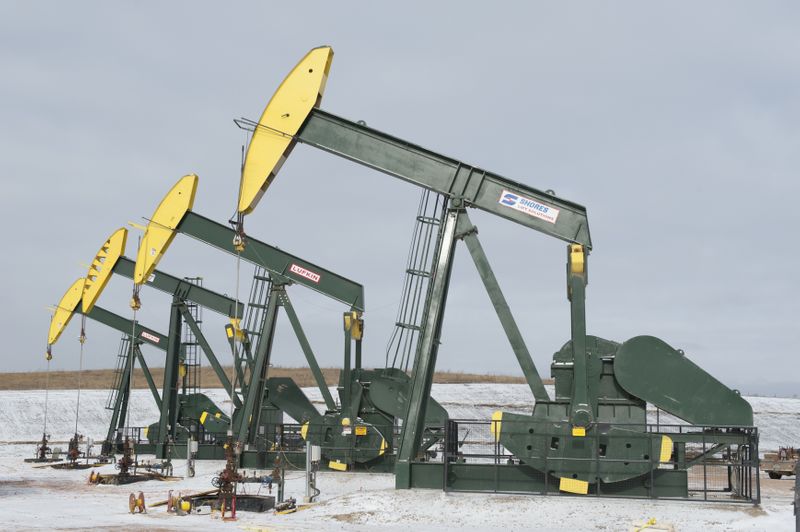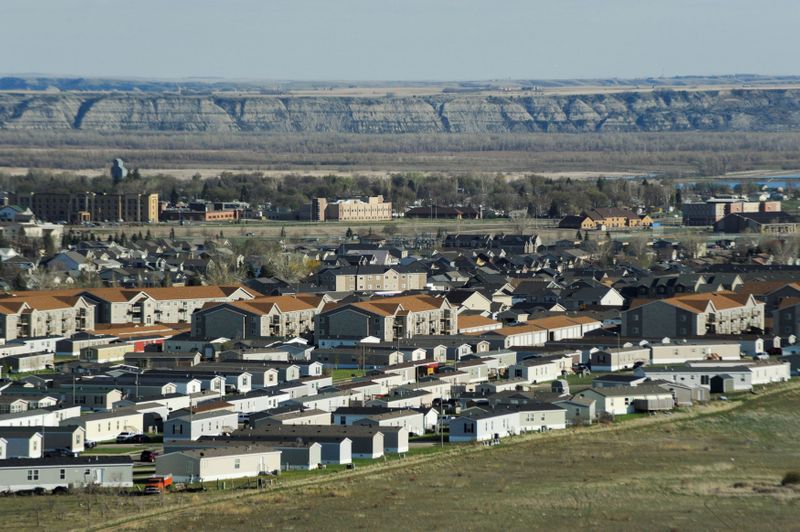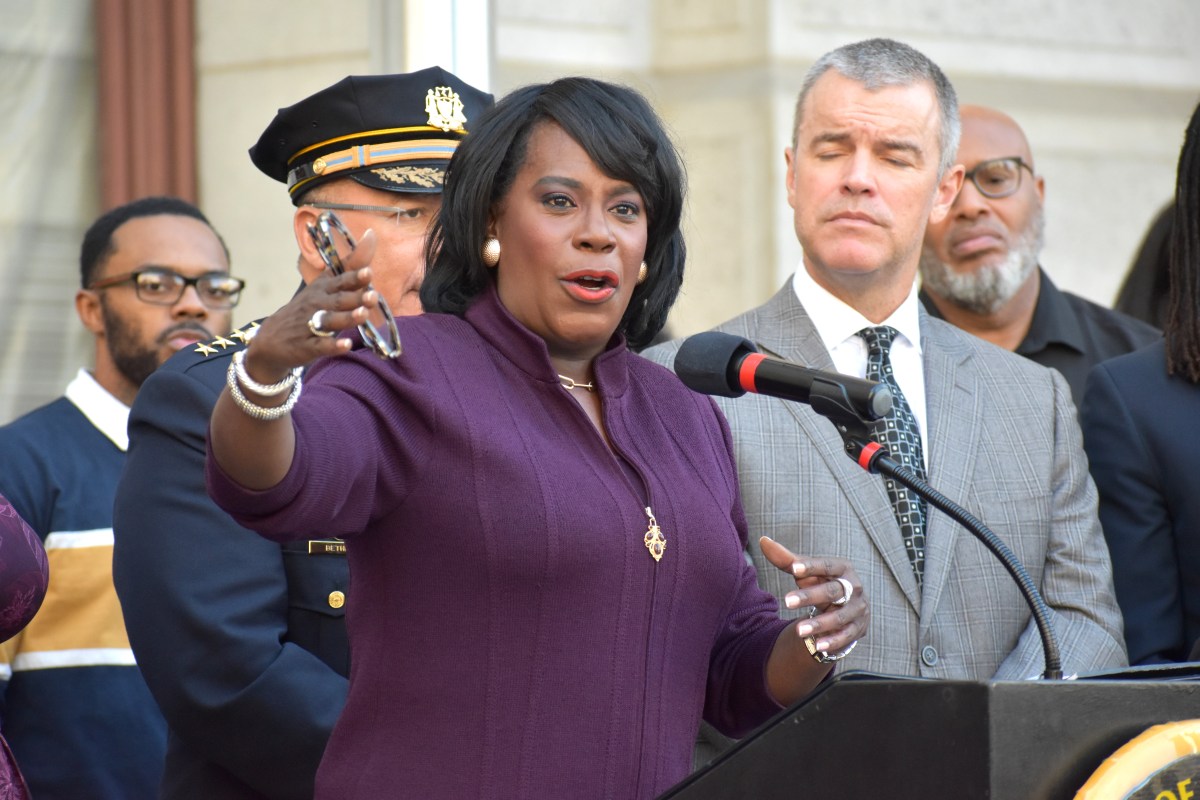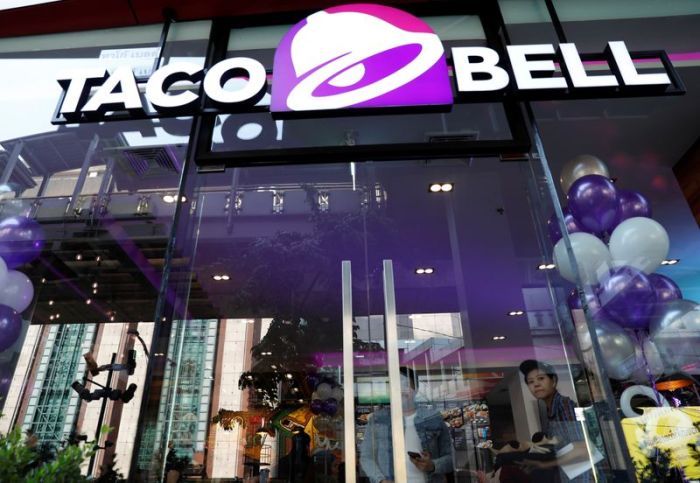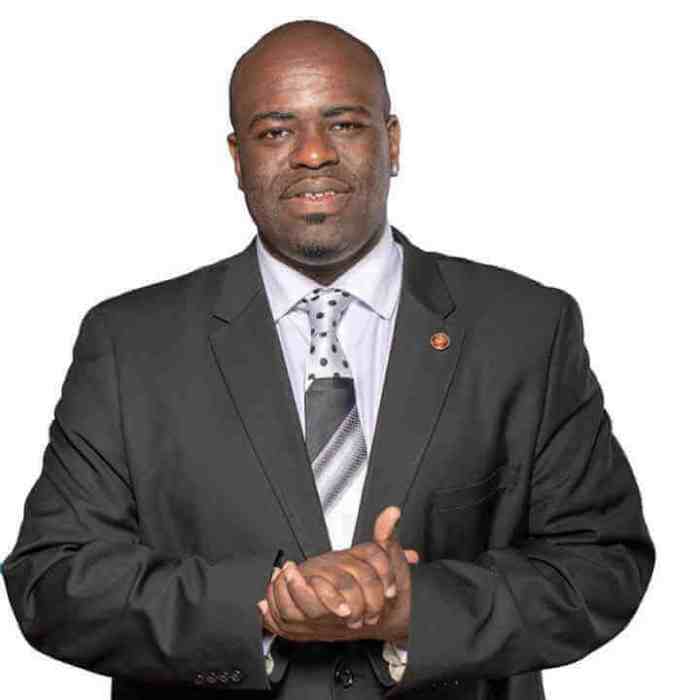NEW YORK/CHICAGO (Reuters) – When the novel coronavirus first appeared in the United States, North Dakota was in the envious position of having more money in its state coffers than it had budgeted.
Now, it is making sweeping cuts to state agencies in a bid to stem the financial bleeding from a historic oil price collapse sparked by the coronavirus pandemic, and a battered farm economy still struggling with the fallout from the U.S.-China trade war.
Governor Doug Burgum has asked state agencies to begin slashing upcoming budgets between 5% and 15% to weather what he has described as an economic Armageddon as energy-related revenues plummet.
North Dakota is among the states most dependent on both energy and agriculture. The impact of the virus and trade war on its lifeblood industries could ripple through its budget for years through cuts to education, government and highway services.
With North Dakota generally maintaining a balanced budget and carrying little debt, its current struggles point to a long road to recovery for other U.S. states dependant on commodity production, many that were already on shakier financial ground when the virus hit. For a graphic, click https://tmsnrt.rs/2YqeVYr
Oklahoma, one of the top producers of oil and wheat in the country, is projecting a $1.36 billion hole in its budget from the downturn. Alaska has suffered a credit downgrade, while New Mexico and Oklahoma have been given negative credit outlooks, meaning they’re are on the verge of being downgraded.
“Never after 25 years of working on the state budget have I been through a more volatile period of tremendous and multi-faceted changes,” said Joe Morrissette, director of the state’s Office of Management and Budget.
The state’s unemployment rate jumped to 8.5% in April, up from just 2% in March. Rising unemployment could cut North Dakota’s tax revenues in half, according to North Dakota State University economists. State GDP may drop by 15% to 25% within a year, the economists said, putting it near the lowest in a decade.
Signs of trouble are appearing across the state. At truck dealerships in the more-populous east, untouched rows of shiny vehicles are finding few buyers.
There was a 29% drop in sales of medium and heavy-duty vehicles, and a 4% decline of lighter auto sales, in the first four months of 2020 compared to the same period last year, according to the latest data from the National Automobile Dealers Association.
Extended stay hotels in the state’s oil patch, normally buzzing with oilfield workers, sit largely unoccupied.
“This energy slowdown happened right in conjunction with coronavirus. Our hotels went from a 70% to 80% occupancy rate to a 20% occupancy rate,” said Rachel Richter Lordemann, president of the Williston Area Chamber of Commerce.
Mineral rights owners, many who supplement their retirement income with royalty payments from oil and gas production in the state, have seen an 85% cut in payments compared to January, said Bob Skarphol a retiree with mineral rights and head of the Williston Basin Royalty Owners Association.
“If you’re someone who’s living month to month on oil revenue, a drop like that is very significant and can force you to choose what not to pay – do you not pay your utility bill, do you not buy your drugs, do you not buy food?” Skarphol said.
In Williston, an oil hub that has more than doubled in population over the last decade, specialty kitchen store Cooks On Main is selling far fewer pricy espresso machines and cutlery sets and far more staples like yeast, flour and coffee amid the pandemic and the oil crisis.
“Everybody, no matter what industry you’re in, is feeling some sort of negative impact,” said owner Angela DeMars-Skogen.
TAX REVENUES ERODE
Taxes collected on oil production – the biggest contributor to North Dakota’s tax revenue – more than halved to $95 million in March from around $200 million previously, said Morrissette.
Oil producers have cut output quickly in North Dakota as benchmark prices fell below their costs of production. North Dakota’s shale patch is prolific – the second largest in the country – but it’s more expensive to pump oil from the state than from the giant shale fields of Texas.
Oil and gas production tax revenue in North Dakota is 53% of all taxes collected, more than any other state and proportionally much higher than the 1.37% contribution to total tax revenue in the United States.
Half of those revenues, which were projected to total $4.9 billion over the state’s two-year budget, are redistributed to the school districts and localities where energy is produced, which will now get less than what was budgeted for.
The rest goes into a series of special-purpose state funds and to North Dakota’s general fund, the primary cash account that pays for day-to-day operations of the widest range of state agencies, from its university system to law enforcement.
DOWN ON THE FARM
Farming, the state’s biggest industry and responsible directly or indirectly for nearly a quarter of all its jobs, is in a prolonged downturn, North Dakota Agriculture Commissioner Doug Goehring said. The sector has suffered a string of crises in the past three years, from low prices due to global oversupply to crop-damaging storms and the U.S. trade war with China. North Dakota typically sells about two-thirds of its soybean crop to China, but those sales have been curtailed since 2018 due to the trade war.
North Dakota’s farmers are cutting spending and hoarding grain instead of selling at loss-making prices, with spring stockpiles of corn and soybeans reaching the second highest on record for the state.
Paul Sproule, a farmer in Grand Forks, would normally trade in tractors and combine harvesters every two to three years for new ones. He is sticking with his existing farm fleet this year instead.
“The economics aren’t there,” said Sproule. “You get what you absolutely need and repair what you’ve got. We’ll be doing no purchasing at all.”
Five months after the two countries signed an interim trade deal that should have revived sales from North Dakota, tensions with China have risen over the virus, as well as China’s policies toward Hong Kong.
A survey by the Minneapolis Federal Reserve Bank found that 82% of agricultural lenders expect second-quarter farm incomes in North Dakota to fall from a year earlier, and 76% expect farm capital spending to decrease.
The impact from the downturn will be more acutely felt once harvesting begins in late summer and farmers are unable to turn a profit on grain sales, said Frayne Olson, an agricultural economist at North Dakota State University.
“There are only one or two crops, given today’s prices, that a farmer can make any money on, and they are not the major ones like corn, soybeans or wheat,” Olson said.
(Editing by Simon Webb and Edward Tobin)

